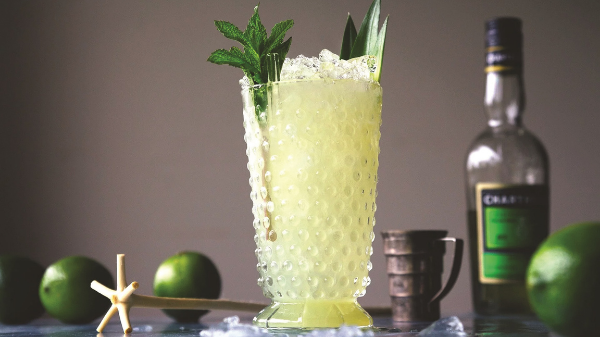When, as occasion has it, all thoughts turn to green-tinted tinctures, chances are that the mighty absinthe will be the tipple to ripple through your reflections. A very different emerald embrocation, however, has steadily been gaining global recognition, largely on account of its spicy herbal flavours and the fact its 400-year-old recipe remains shrouded in mystery. The concoction in question, of course, is Chartreuse, the French vegetal brew, the make up of which is supposedly only known to the Order of Chartreuse, a society of taciturn monks devoted solely to prayer, meditation and distillation.
It’s a backstory that has frequently excited a degree of scepticism. After all, various spirit brands have all too frequently titivated their origins in order to add extra layers of intrigue and allure for less worldly-wise consumers. While such tales stretch from minor embellishments to full-on heritage hoaxes, Chartreuse may just be the exception.
Its – apparently true – origins date back to 1605, a time when Duc Francois Hannibal d’Estrées, a French nobleman, gifted an ancient manuscript supposedly detailing the constituents of an ‘Elixir of Long Life’ to a Chartreuse monastery in a suburb of Paris. Many years later, the manuscript was dispatched to La Grande Chartreuse, the order’s head office, secreted away in the picturesque Grenoble mountains of southeastern France. There, an exhaustive study began in a bid to decipher the document.
It wasn’t until 1764, however, that Jerome Maubec, the monastery’s apothecary, finally uncovered its secrets and promptly set about putting the formula into production. It was a triumph of the time and particularly impressive in that the recipe stretches to a staggering 130 herbs, plants and other botanicals, all of which need to be precisely macerated and blended in order to achieve the perfect balance of flavours. Today, Maubec’s decoded recipe is still followed to the letter, yielding the spirit’s 68-percent alcohol content and, less assuredly, producing a cure-all tonic that can remedy a wide range of ills and grant regular imbibers a longer life.
Across the many intervening centuries, the monks have, admittedly, adulterated the recipe somewhat to create milder, more palatable brews. In 1840, for instance, they released Green Chartreuse, which came with a gentler 55-percent alcohol content. Along the way, there was also a Yellow Chartreuse”, a sweeter iteration with an even more abstemious 40-percent alcohol level. As with the original, their exact recipes remain shrouded in mystery, supposedly known to only one or two designated monk any given time.
These offshoots, however, remain two of the brand’s most iconic incarnations and, have been embraced the world over. The former French president Charles de Gaulle, for example, enjoyed his hot chocolate with a spot of the herbal liquor, while a character in Quentin Tarantino’s 2007 slasher film Death Proof even went as far to state: “Chartreuse, the only liqueur so good they named a colour after it.” Today, the spirit’s various manifestations are all but ubiquitous in high-end bars, while also being utilised in any cocktails looking to impart a spicy herbal zing and delivering a potent punch.
Keen to try the green? This particular cocktail comes highly recommended:
A refreshing, high-octane cocktail fueled by the herbal heat of chartreuse.
Ingredients:
1. 1½ oz green chartreuse
2. 1 oz pineapple juice
3. ¾ oz lime juice
4. ½ oz falernum
5. Garnish: Mint sprig and lemon wheels
Instructions:
1. Pour ingredients into a shaker and stir. then transfer into highball glass.
2. Fill crushed ice and mix until the outside of the glass is frosty.
3. Top with more crushed ice. Garnish with mint sprig and lemon wheels.






